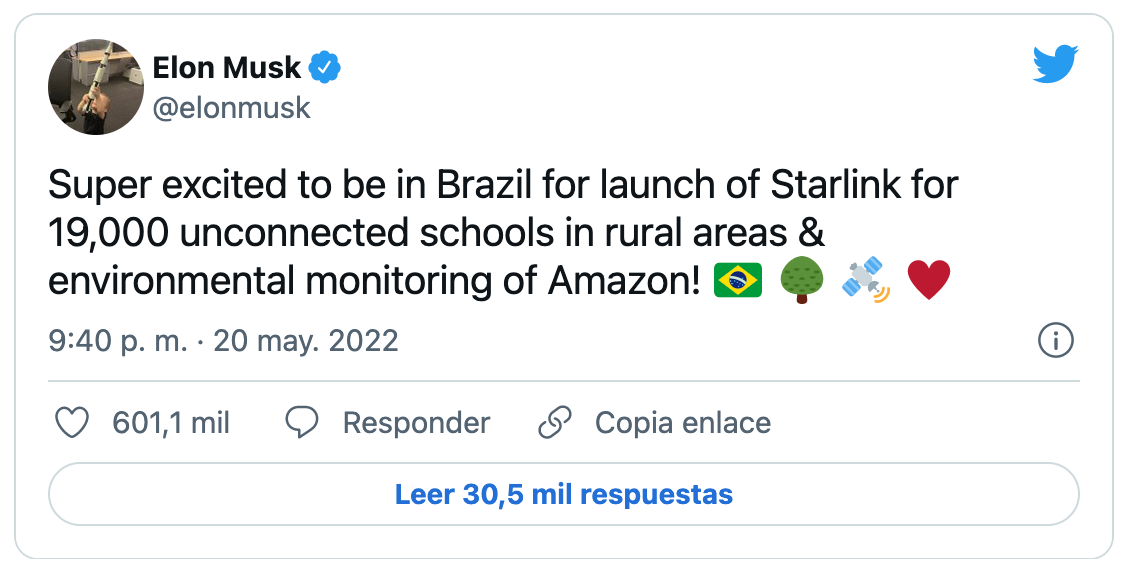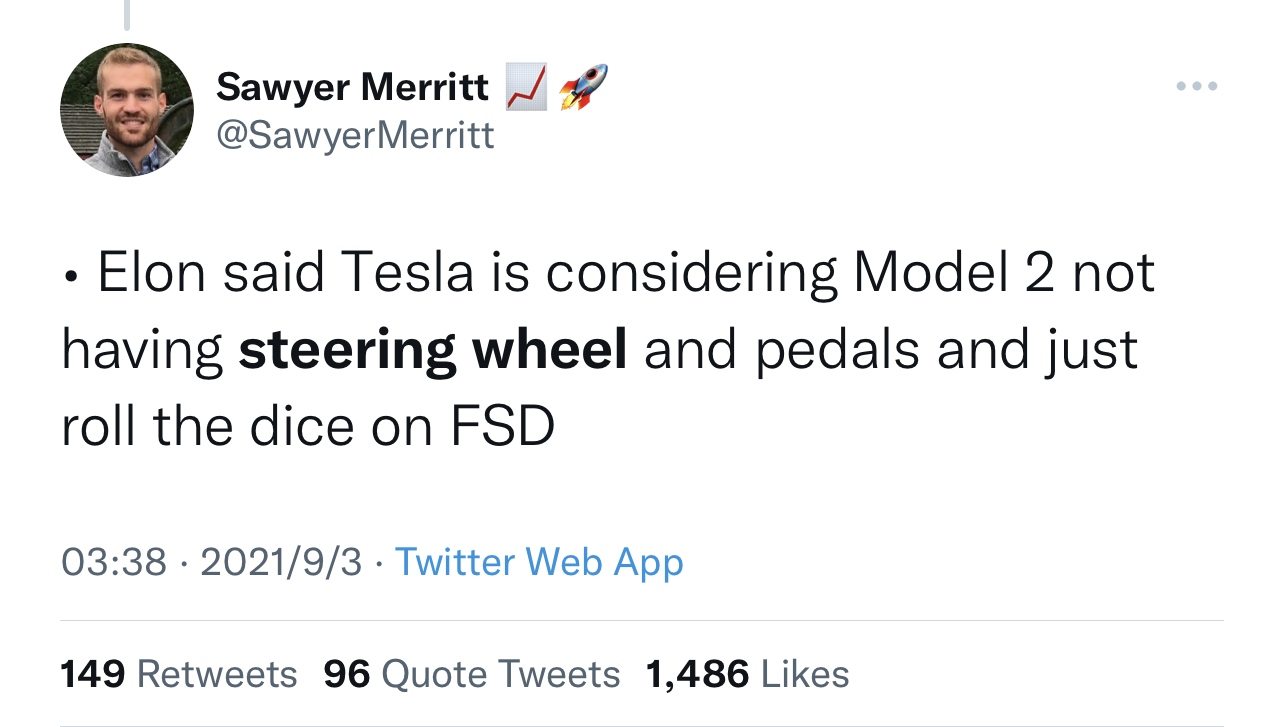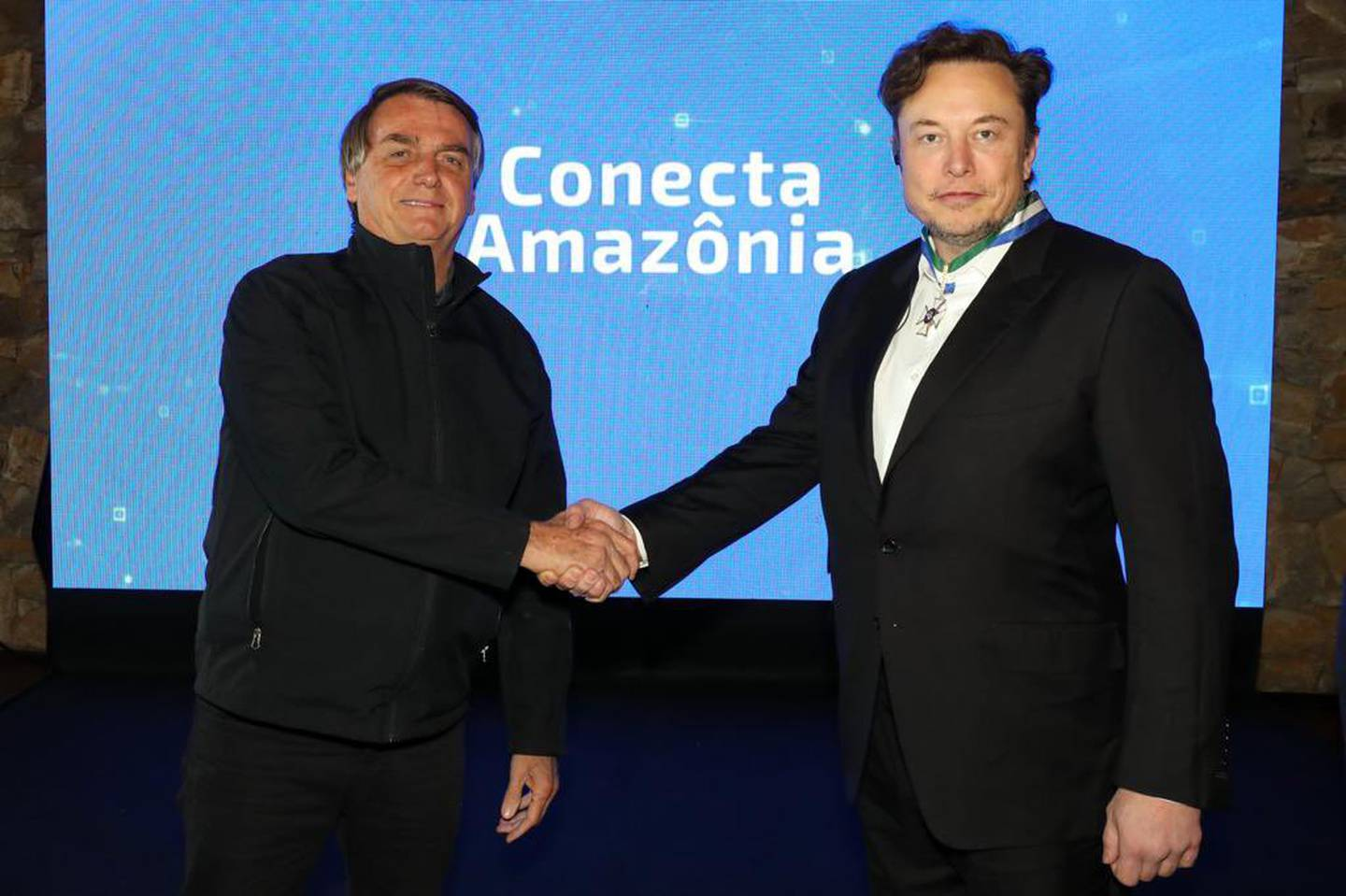Last week, Musk visited Brazil and had a talk with Brazilian President Jair Bolsonaro, in which Starlink was one of the important topics. Musk intends to provide internet access for remote populations in the Amazon rainforest, and Starlink can be very useful in rural areas far away from large settlements. Starlink is currently operating in 32 countries/regions, but Musk hopes it can go global.

In addition to Starlink on the Amazon rainforest, Musk also “deployed satellites” on Tesla’s autonomous driving system.
Musk briefly mentioned that he believes Tesla will be capable of autonomous driving without human supervision by this time next year (May 2023). Considering the current uncompleted status of the FSD suite, it sounds unlikely.
It seems almost numbing to hear Musk say things like this. As early as 2015, Musk stated that Tesla will achieve autonomous driving without human drivers supervising within two years. He also claimed that from 2020 to the end of 2022, one million autonomous driving taxis from Tesla would hit the road. Recently, Musk has changed this goal to “Tesla will have one million FSD Beta test users by the end of this year.”

According to reports, Tesla is developing a driverless taxi, which will not even have a steering wheel or pedals. It is believed that this car is not based on existing mass-produced models and will debut in 2024 and go into production. Therefore, FSD may need to provide reliable autonomous driving, which may be the most urgent reason why Tesla needs to land fully autonomous driving capabilities as soon as possible.
🔗Information source: InsideEvs
This article is a translation by ChatGPT of a Chinese report from 42HOW. If you have any questions about it, please email bd@42how.com.
